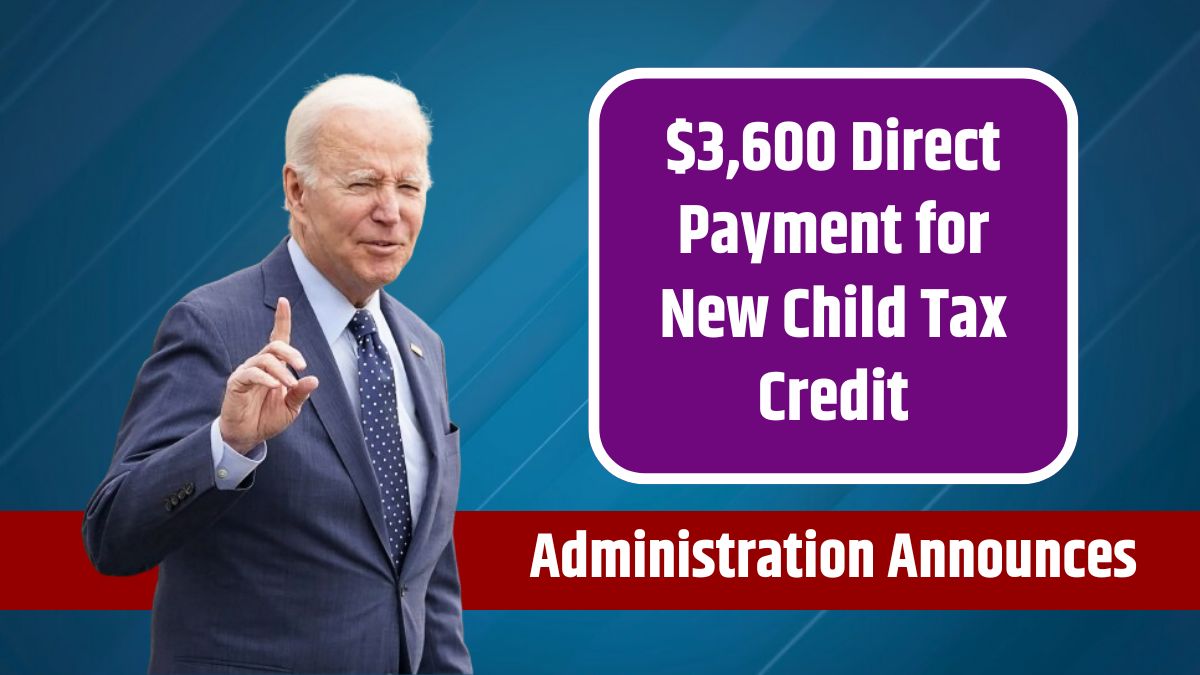With rising costs and economic uncertainty, many American families are seeking ways to ease their financial burden. One essential relief measure is the Child Tax Credit (CTC), which allows parents and caregivers to lower their tax obligations.
In some cases, eligible families may receive up to $3,600 per child, depending on the state they live in and their income. This tax credit provides much-needed assistance, especially for lower-income households, by either reducing tax liability or offering partial refunds.
Child Tax Credit
The Child Tax Credit is designed to relieve financial strain on families, allowing them to keep more of their income. While the credit can be as high as $3,600 per child, not all families receive this full amount as a cash refund. Instead, the CTC primarily offsets tax liability, and only a portion is refundable, meaning families with minimal or no tax obligations might not access the full amount in cash.
For families with higher incomes, the credit gradually decreases, ensuring that the relief primarily targets low- and moderate-income households.
| Criteria for CTC Eligibility | Requirement |
|---|---|
| Dependency | Claimed as dependent on tax return |
| Residence | Lived with taxpayer for at least half the tax year |
| Financial Support | Taxpayer provided at least half of child’s support |
| Social Security Number | Child must have a valid Social Security number |
| Relationship | Child must be a direct relative (e.g., son, daughter, sibling) |
Eligibility Requirements
To qualify for the Child Tax Credit, specific conditions must be met:
- Dependency: The child must be claimed as a dependent.
- Residence: The child must reside with the taxpayer for at least half the tax year.
- Financial Support: At least half of the child’s financial support must come from the taxpayer.
- Social Security Number: The child must have a valid Social Security number.
- Relationship: Only direct relatives like children, stepchildren, siblings, or their descendants (e.g., grandchildren) qualify.
Income level also plays a significant role in determining the credit amount. For joint filers, the Modified Adjusted Gross Income (MAGI) limit is set at $400,000, while single filers and other statuses have a limit of $200,000. These high limits make the credit accessible to most taxpayers, but exceeding these limits results in a reduced credit. Specifically, for every $1,000 above the threshold, the credit decreases by $50.
Example Calculation:
For a couple with a MAGI of $405,000, the CTC reduces by $250 ($50 for each of the $5,000 over the limit), resulting in a credit of $1,750.
Receiving the Credit
Each year, taxpayers may claim the CTC during the regular tax season, which starts in January and generally ends in mid-April. Those filing electronically and opting for direct deposit can expect their refunds within 21 days, barring any filing errors. The IRS recommends electronic filing over paper filing, as paper returns can delay processing times significantly.
State-Level CTC Programs
In addition to the federal CTC, some states offer their own versions of the credit, varying in eligibility criteria and refund methods. While some states issue refunds directly, others provide assistance through childcare vouchers or similar programs. Addressing state-specific policies can help families maximize available benefits. Consulting a tax professional familiar with both federal and state tax policies can further ensure taxpayers take advantage of every opportunity to save.
The Child Tax Credit is a vital resource for families, especially in today’s economic climate. By knowing the credit’s benefits, eligibility requirements, and filing processes, families can better manage their finances and access the support they need.
FAQs
Who qualifies for the Child Tax Credit?
Dependents under 17 with valid Social Security numbers qualify.
What is the income limit for full credit eligibility?
Joint filers: $400,000; single filers: $200,000.
Is the full $3,600 refundable?
No, only a portion of the credit is refundable.
When can I claim the Child Tax Credit?
Claim during tax season from January to mid-April.
How can states offer additional Child Tax Credits?
States set independent requirements and offer refunds or vouchers.











